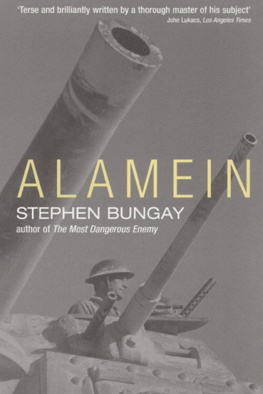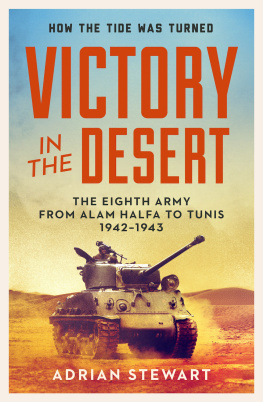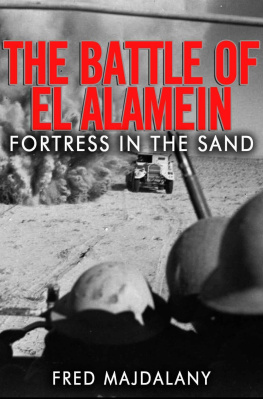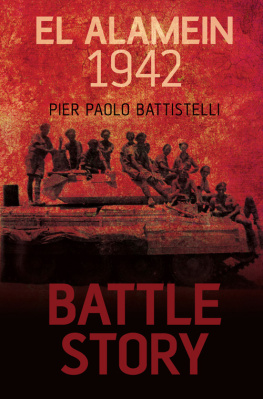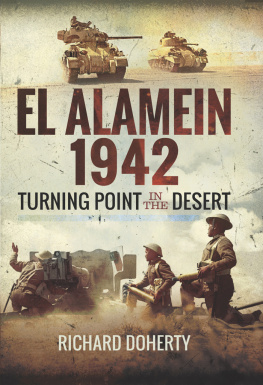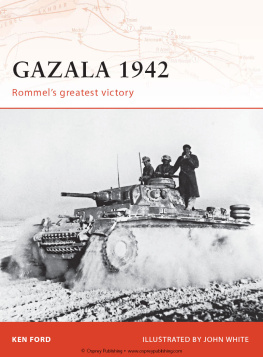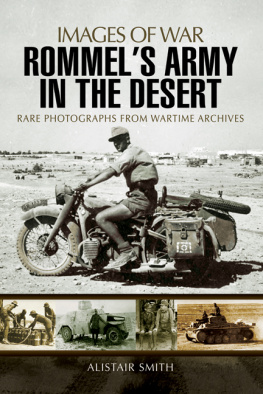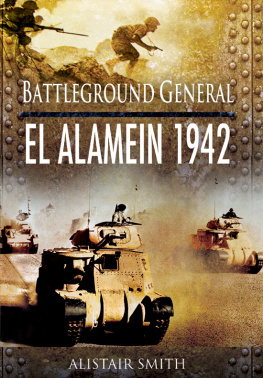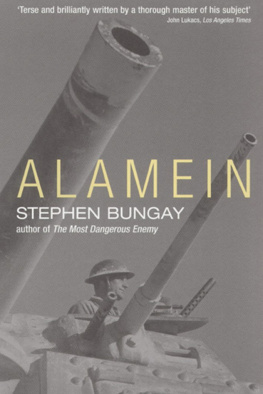

T HE MIDDLE EAST , JOURNALISTS SAY , is a powder keg. The Middle East, diplomats say, is strategically vital to every major power outside Middle East, historians will tell you, has fought over since men learned to bear arms. The first battle of recorded time took at Megiddo in what is now Israel in 1469 BC. The losers suffered 83 casualties. Despite this modest beginning, it became the scene of repeated belligerent encounters and is thought to be behind the name given in the Bibles Apocalypse to the final battle between good and evil: Armageddon.
To the north and east of this first battlefield, in what used to be called Asia Minor, Assyrians fought Babylonians, Hittites fought Egyptians, Persians fought Lydians and Trojans fought Greeks. Far to the west of it, across Spain and Italy and in what is now Tunisia, Romans fought Carthaginians for 150 years. In 1918 Megiddo became a battlefield once more. There, a British army under General Allenby, abetted by an Arab force under Colonel T. E. Lawrence, decisively defeated their Turkish opponents, in a campaign which resulted in control of Palestine moving from the Ottoman to the British Empire. But in between, one stretch of rocky, scrub-strewn sand was not stained with blood. It consisted of the northern coast of There was no food and little water. There were no people. Just sand, rock and flies.
Until 1940. In the 3,400 years which had passed since the first battle at Megiddo, mans ingenuity had enabled him to live, for a time, in this wilderness. And where he could live, he could kill. From December 1940, for over two years, over a million men from ten faraway countries fought here, and more than 50,000 of them died. Their deeds and sufferings captured the imagination of the world.
For two years it was the only theatre of World War II in which a British army was able to engage a German one. Its significance grew out of all proportion to its scale. On both sides, reporters flocked out to witness it. They were captivated by the haunting landscape and the fighting men of the desert, who flouted military conventions in their attitudes and their dress. In this little corner of an industrial war that consumed nameless millions, they found individuals and heroes, chivalry and romance. The fighting was personalised, and portrayed as a battle of wits between the commanders, whom the journalists turned into popular celebrities. The different nationalities of the soldiers put a colourful panoply of characters onto the stage in a variegated chorus around the heroes. National characteristics found gratifying affirmation. The reporters copy was full of clever, methodical Germans, excitable, unsteady Italians, tough Australians and wiry New Zealanders, exotic Indians and gallant Free French. The British found their class system reflected in portraits of dour, long-suffering Tommies and their languid, fox-hunting officers. The desert war produced more household names and more legends than any other campaign.
This war was dominated by machines: by guns, trucks and, above all, by tanks. The fighting was more like war at sea than war on land. Possession of territory counted for little, with tanks manoeuvring like ships of the age of sail and loosing off their guns at each other across the deserts empty expanse. The pounding of heavy seas on planking and rigging was replaced by the grinding of rocks on tracks and grit on gears. Blinding salt spray on the faces of captains was replaced by clouds of dust in the eyes of commanders. Tank battles were interrupted by sand storms rather than gales. They were becalmed by lack of petrol rather than lack of wind. To abandon a vehicle in the open desert was to be adrift in the ocean. There had never been anything like it before.
As the fighting ebbed and flowed east and west across the desert the two sides seemed evenly matched. The tide finally eddied into a funnel of land in Egypt where it lapped up around a succession of rocky ridges and depressions running between the sea and an impassable depression some forty miles south. The end of that funnel was the only place in the desert where the southern flank could not be turned, forcing the armies to meet head-on. There, for four months, the two sides sallied out to fire broadsides at each other and retire, until, in October 1942, they fought the battle which finally decided the desert war.
This one was not like the other battles. There would be no squadrons of tanks scudding across open expanses. There was little manoeuvre. Infantry and gunners would dominate the action, while the desert ships fought at anchor. It was to be a battle of deliberate attrition, conducted in a way a veteran of World War I would have recognized. Its designer was a peculiar little man who had never commanded an army in battle before. It made him the deserts last great celebrity. It was not a very big battle by the standards of the war, but it was a battle he, his army and his country had to win. For the western Allies it would become a signpost in the history of the war, marking the point at which the path of defeat turned into the road to victory. The place where it was to be fought got its name from a sleepy little railway station near the coast. It was called El Alamein. What was it that brought all these people here?
It all began because two of the protagonists were already there. In 1912 Italy wrested possession of the north African colonies of Tripolitania and Cyrenaica from the Ottoman Empire, and merged them in 1934 to form its own colony of Libya. Britain had turned Egypt into a protectorate during World War I to keep it out of the hands of the Turks and use it as a base for its operations in the Middle East. Technically, Egypt was an independent state bound by agreements with Britain over the use of its territory for military bases. In practice, Egypt was a reluctant colony. When the European war broke out in 1939, the Egyptian government officially remained neutral. Through Egypt flowed the waters of the Suez Canal, and beyond it, in Arabia, flowed oil.
On 10 June 1940, just after the German Army had ejected the British Army from continental Europe at Dunkirk and was in the process of finally defeating the remains of the French Army, the Italian leader Mussolini declared war on France and Britain.
Hitler had long admired Mussolini. Mussolini began his political career as a socialist, but the Italian Socialist Party expelled him in November 1914. In the turmoil of the 1920s, he became the first Fascist dictator to come to power in Europe. By dint of the violent activities of his black-shirted paramilitary gangs called fasti di combattimento, culminating in a march on Rome, he had forced the King to make him Prime Minister of Italy in 1922. In 1925 he imposed a dictatorship, calling himself Il Duce Leader. On coming to power in 1933, Hitler adopted the same title der Fhrer. After both Germany and Italy had supported the Fascist General Franco in the Spanish Civil War, the two countries signed a secret protocol in Berlin on 21 October 1936. In a speech on 1 November, Mussolini referred to this agreement as forming an axis around which all the other European powers which desired peace and collaboration could work together. Italy and Germany thus became known as the Axis powers. Despite his generals misgivings about Italys armed forces, Hitler wanted to make the Axis a military alliance. He got his way on 22 May 1939 when, at Mussolinis sudden instigation, the two countries signed the Pact of Steel, whereby the two high contracting parties solemnly agreed to come to each others assistance if either should suffer the misfortune of becoming embroiled in some sort of warlike complications.
Next page
